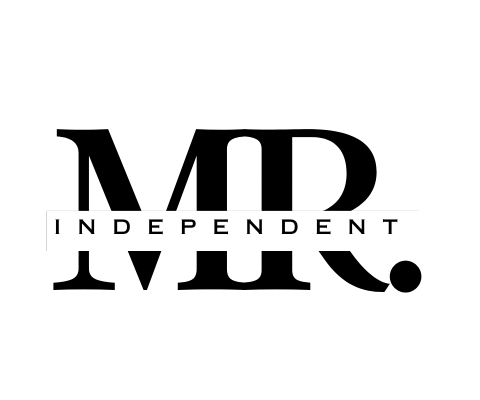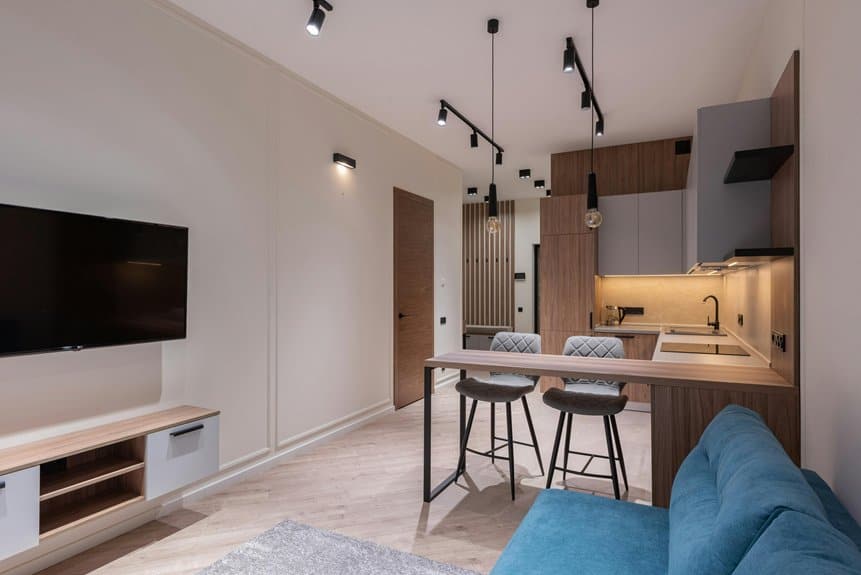Your comfort zone is like that old security blanket – cozy and familiar, but it’s quietly sabotaging your growth.
You might be stuck**** if the mere thought of new experiences makes your palms sweat, or if you’re defending the same tired routines because “they’ve always worked fine.”
The truly uncomfortable truth? Most people don’t notice they’re trapped in their comfort bubble until they’ve wasted precious years embracing mediocrity. And yes, that might be you right now.
Key Takeaways
- You constantly make excuses to avoid new experiences that could lead to growth opportunities.
- You feel physical anxiety or stress symptoms when faced with unfamiliar situations or environments.
- Your decision-making is paralyzed by overthinking and fear of unknown outcomes.
- You prioritize avoiding discomfort over pursuing meaningful goals and aspirations.
- You cling to unsatisfying routines and circumstances despite knowing better alternatives exist.
You avoid trying new things because they feel risky
When you’re addicted to your comfort zone, new experiences start looking like threats rather than opportunities. You find yourself creating elaborate justifications for sticking with the familiar—”I already know what I like,” or “Why risk failure when I can do what I’m good at?”
That nagging sense of uncertainty feels so overwhelming that you’d rather stay put than venture into unknown territory. You might even catch yourself scrolling past interesting events, declining invitations, or abandoning creative ideas simply because they don’t come with guaranteed success.
The problem deepens when avoidance becomes your default setting. Every time you sidestep a new challenge, you’re actually training your brain to equate unfamiliar situations with danger.
Your world gradually shrinks as your tolerance for discomfort diminishes. What began as occasional hesitation changes into a persistent pattern where anything outside your routine feels impossibly intimidating.
Meanwhile, those moments of growth—the ones that initially feel awkward or challenging—are precisely where life’s most meaningful experiences often hide, waiting for you to be brave enough to discover them.
Many people hold limiting comfort beliefs that keep them trapped in familiar patterns, unaware that these beliefs are often based on misconceptions rather than facts.
You stick to routines even when they don’t serve you
Although comfortable routines provide a sense of stability and psychological safety, they can quickly transform into rigid habits that severely limit your growth potential and hold you back from new opportunities. You know that feeling when you’ve eaten lunch at the same bland café for years, even though you hate their mediocre sandwiches and have dozens of better options nearby – that’s routine addiction at work, keeping you trapped in familiar but unsatisfying patterns.
| Routine Benefits | Signs It’s Time for Routine Reassessment |
|---|---|
| Structure & organization | Persistent feelings of stagnation or boredom |
| Improved time efficiency | Performance metrics show no improvement |
| Reduced daily anxiety | Regular complaints without taking action |
| Reliable predictability | Multiple superior options are available |
| Mental energy conservation | Decreased motivation and engagement |
| Clear decision frameworks | Missing growth opportunities |
The difference between helpful routines and harmful ones is simple: helpful routines energize you and create forward momentum, while harmful ones drain your energy and keep you stuck in place. Next time you catch yourself mindlessly following a routine, ask yourself: “Is this actually serving me, or am I just afraid to mix things up?” Your comfort zone might be comfortable, but it’s a terrible place to grow.
Breaking free from limiting routines requires conscious effort and a willingness to embrace temporary discomfort for long-term growth. The key is to start with small changes that feel manageable while gradually expanding your comfort zone, allowing your brain to adapt to new patterns without triggering overwhelming resistance or anxiety.
The hidden costs of comfort can accumulate silently over time, preventing you from reaching your full potential and experiencing life’s richest opportunities.
You feel uncomfortable when things are out of your control
Control freaks aren’t born, they’re made—usually through comfort zone addiction. When you’ve tailored your life to be perfectly predictable, anything unexpected feels like a five-alarm fire in your nervous system.
You might notice yourself overthinking simple changes in plans, feeling anxious when someone else takes the wheel (literally or figuratively), or avoiding situations where outcomes aren’t guaranteed. This discomfort with uncertainty isn’t random; it’s your comfort zone fighting to maintain its cozy boundaries.
This reaction reveals how deeply entrenched in safety-seeking behaviors you’ve become. The world outside your control represents potential growth, but also potential failure—and that’s terrifying when you’re hooked on comfort.
Notice how you respond next time someone changes the restaurant choice or your boss assigns an unexpected project. That knot in your stomach? It’s withdrawal symptoms from your comfort addiction, signaling exactly where your growth edge lives.
Pushing through that discomfort, rather than retreating from it, is your pathway to breaking the cycle. Learning to embrace risk is essential for personal development and achieving meaningful goals in life.
You often choose convenience over personal growth
Personal growth requires discomfort and pushing beyond your established comfort zones, yet you consistently take the easy road because it feels safe and familiar to your brain’s reward systems. You’re caught in a convenience culture trap, reflexively choosing passive entertainment over active engagement, defaulting to automated solutions instead of skill-building opportunities, and maintaining routines that no longer challenge your physical or mental capabilities – all while knowing these choices limit your potential for meaningful development.
| Choice | Convenience Path | Growth Path |
|---|---|---|
| Learning | Basic YouTube tutorials, surface-level articles, skimming content | Structured courses with expert feedback, deep research, practical application |
| Career | Maintaining same comfortable role, avoiding new responsibilities | Pursuing challenging positions, developing new skills, leading projects |
| Social | Texting familiar friends, social media scrolling, virtual interactions | Meeting new people in person, joining groups, public speaking events |
| Health | Quick processed meals, minimal movement, irregular sleep | Meal planning, progressive exercise, consistent sleep schedule |
| Finance | Impulse spending, avoiding budgets, minimal planning | Investment research, budget tracking, long-term planning |
Your decision-making reveals a lot about your fixed mindset tendencies and resistance to meaningful change. Each time you prioritize ease over challenge, you’re fundamentally telling yourself, “I’d rather be comfortable than better,” reinforcing patterns that limit your potential growth.
The path to overcoming this comfort addiction requires conscious awareness and strategic discomfort integration into daily life. Building a growth mindset means deliberately choosing challenging options in small, manageable doses, gradually expanding your comfort zone while developing resilience through consistent exposure to productive stress and learning opportunities.
While staying in your comfort zone feels safe, embracing the ups and downs of new experiences is essential for personal development and long-term satisfaction.
You resist change, even when it could improve your life
We all know that feeling—something better waits on the horizon, but you cling to what’s familiar like a security blanket. Maybe it’s staying in that soul-crushing job despite having interviews lined up, or continuing to use that ancient phone with the cracked screen when you can afford an upgrade. Your brain creates elaborate justifications: “The devil you know,” or “It’s not that bad,” while conveniently ignoring the potential benefits waiting just beyond your comfort bubble.
This resistance isn’t random—it’s a classic sign you’ve developed an addiction to your comfort zone.
The truly revealing part? Your resistance often intensifies precisely when the potential improvement is greatest. That promotion requiring relocation? That relationship needing vulnerability? That fitness program demanding early mornings?
Your mind suddenly becomes an expert at generating worst-case scenarios and exaggerating minor inconveniences. The comfort zone becomes a prison disguised as protection, and breaking free requires acknowledging a tough truth: growth and comfort rarely coexist.
When you automatically resist positive change, you’re not being cautious—you’re displaying the hallmark symptoms of comfort addiction.
Understanding when to take calculated risks and embrace challenges is essential for personal development and long-term success.
You prefer familiar environments to new or challenging ones
While investigating unfamiliar territory might lead to exciting discoveries, you’ve mastered the art of gravitating toward the same coffee shop, the same vacation spot, and even the same conversation topics with unwavering loyalty and deeply ingrained habits. You’ve created a cocoon of comfortable environments where everything feels safe and predictable, developing intricate routines that shield you from unexpected challenges or changes. When faced with new settings, you instantly search for the exit or count down until you can return to your familiar surroundings, often experiencing physical symptoms of discomfort like increased heart rate or sweaty palms. Your tendency to seek safety in familiarity has become so automatic that you may not even realize how it limits your experiences and personal growth potential.
| Your Comfort Zone Patterns | Growth Opportunities |
|---|---|
| Same restaurant every Friday night, ordering identical meals | Try a new cuisine monthly, starting with neighboring cultural dishes |
| Vacation at identical resorts, same room category annually | Investigate one unknown destination yearly, mixing urban and nature experiences |
| Known settings for social gatherings, inviting the same circle | Host an event in a novel space, incorporating new acquaintances |
| Routine preferences in daily activities, fixed schedule | Add one new activity weekly, starting with low-risk variations |
| Safe spaces exclusively for relaxation, avoiding public areas | Find relaxed settings in new environments, gradually expanding comfort zone |
| Repetitive entertainment choices, same genres/formats | Explore different entertainment mediums, expanding cultural awareness |
| Fixed commuting routes, even when alternatives exist | Test alternative paths during low-stress times |
Past experiences in predictable places feel good, but they’re keeping your life small and preventing natural evolution of your comfort boundaries. Your resistance to change has created invisible barriers that affect everything from career opportunities to personal relationships, while maintaining these patterns reinforces neural pathways that make breaking free increasingly challenging. Taking small deliberate steps toward unfamiliar experiences can gradually expand your comfort zone and lead to personal transformation.
You frequently avoid taking risks or stepping outside your bubble
You might notice that whenever opportunities arise to try something new or challenging, you automatically find reasons to stick with your familiar routine.
Maybe it’s declining invitations to events where you won’t know anyone, avoiding job applications for positions that feel like a stretch, or always ordering the same dish at restaurants because the unknown options seem too risky.
This pattern isn’t just occasional caution—it’s a consistent choice to prioritize comfort over growth, safety over possibility. Your decisions consistently favor the known path, even when the alternative could lead to something better.
This risk avoidance becomes particularly revealing when you reflect on the explanations you create.
“I’m just being practical,” “Now isn’t the right time,” or “I’m playing it smart” become your go-to justifications.
The truth is, genuine growth happens precisely when we step beyond what feels comfortable. When you habitually avoid uncertainty, you’re not actually protecting yourself—you’re limiting your experiences, skills, and connections.
Each time you choose the familiar bubble over the uncertain but potentially rewarding alternative, you reinforce the walls of your comfort addiction.
Consider starting with a daily growth challenge to gradually build confidence in facing uncertainty and expanding your horizons.
You make excuses to stay in your comfort zone
Beyond simply avoiding risks, the excuses you create have evolved into an elaborate defense mechanism that shields you from facing uncomfortable growth opportunities. Your mind has become remarkably skilled at generating plausible-sounding justifications like “I’ll start that project when I have more time,” “I’m not the right personality type for that activity,” or “It’s just not practical right now”—familiar scripts you’ve rehearsed to perfection that serve as psychological barriers against change.
| Excuse Type | Real Fear Factor | Growth Opportunity |
|---|---|---|
| “I’m too busy” | Fear of failure, fear of inadequacy, fear of wasted effort | Time management skills, priority setting, workflow optimization |
| “I’m not talented enough” | Fear of judgment, imposter syndrome, social comparison | Discovering hidden abilities, skill development, confidence building |
| “It’s too risky” | Fear of uncertainty, fear of loss, fear of change | Building resilience, risk assessment abilities, adaptive mindset |
| “The timing isn’t right” | Fear of commitment, fear of responsibility | Strategic planning, decision-making skills, opportunity recognition |
| “I don’t have the resources” | Fear of scarcity, fear of investment | Resource management, creative problem-solving, networking |
Let’s be real—these excuses aren’t protecting you; they’re imprisoning you in a self-imposed cage of limitation. Every time you say “maybe later” to that side hustle or “I’m fine where I am” to that promotion opportunity, you’re choosing the comfort of stagnation over the potential of growth.
The impact of these self-limiting beliefs extends far beyond professional development into every aspect of personal growth and fulfillment. When you consistently defer your dreams and aspirations behind a wall of excuses, you’re not just avoiding temporary discomfort—you’re actively participating in the gradual erosion of your potential and the dimming of your aspirations.
Embracing personal breakthroughs requires stepping into discomfort and challenging yourself beyond familiar territories.
You delay important decisions because of fear of the unknown
You know that big decision you’ve been “thinking about” for weeks (or months, or even years)? The one where you’ve researched every angle, made lists, asked friends, and somehow still haven’t pulled the trigger? That’s comfort zone addiction in action.
When faced with choices that might push us into unfamiliar territory—whether it’s changing careers, ending a relationship, or moving to a new city—we often respond by delaying the decision indefinitely. It’s not simple procrastination; it’s a protective mechanism your brain uses to avoid potential discomfort, keeping you safely nestled in the predictable embrace of what you already know.
This decision paralysis creates an illusion of thoughtfulness when you’re actually trapped in fear. The brain magnifies potential negative outcomes while minimizing possible benefits, making “I need more time to think” feel completely reasonable. Meanwhile, life continues passing by as opportunities slip through your fingers.
What makes this particularly sneaky is how logical it feels—who wouldn’t want to be thorough before making important choices? The difference lies in your honest motivation: are you gathering necessary information, or are you avoiding the discomfort of venturing into unknown territory?
Recognizing when “being careful” has morphed into “being stuck” is the first step toward breaking free from this particular comfort zone trap. These self-imposed limits often manifest as rational-sounding excuses that keep us from reaching our full potential.
You avoid confrontation, even when it’s necessary for growth
While uncomfortable interactions loom on your horizon, the pattern becomes clear: you’ll go to extraordinary lengths to avoid having that difficult conversation with your boss, confronting your partner about relationship issues, or standing up to a friend who consistently crosses your boundaries. This pattern of avoidance behavior manifests in various ways, from making excuses to physically removing yourself from potentially confrontational situations, and even rationalizing others’ inappropriate actions to maintain a false sense of peace.
Here’s the truth: avoiding confrontation is robbing you of major growth opportunities. Your comfort zone is like quicksand—the more you struggle to stay in it, the deeper you sink.
| Confrontation Benefits | What You’re Missing |
|---|---|
| Builds assertiveness and self-confidence | Genuine relationships built on honesty |
| Creates respect and authority | Professional advancement and leadership roles |
| Develops resilience and emotional strength | Personal empowerment and self-worth |
| Improves communication skills | Deeper connections with others |
| Enhances problem-solving abilities | Opportunities for positive change |
Let’s be real—nobody enjoys confrontation. But there’s a difference between disliking something and letting that dislike control your life. When you dodge necessary conflicts, you’re fundamentally choosing temporary comfort over lasting growth.
The impact of chronic conflict avoidance extends far beyond immediate discomfort, seeping into every aspect of your personal and professional development. This pattern of evasion not only stunts your emotional growth but also creates a cascade of missed opportunities, from career advancement to meaningful relationships, ultimately reinforcing a cycle of diminished self-worth and increased anxiety around future confrontations.
Embracing transformational discomfort is essential for breaking free from the constraints of your self-imposed limitations.
You find comfort in staying in old patterns, even if they’re unhealthy
There’s something eerily satisfying about sticking with what you know, even when those familiar patterns are slowly draining your life force. It’s like wearing those ratty old slippers with holes—they’re falling apart, yet you refuse to throw them away because they’ve perfectly molded to your feet.
This is comfort zone addiction at its most insidious: clinging to established routines, relationships, or situations that might be actively harmful simply because they feel predictable. The psychological safety of the known frequently outweighs the potential benefits of change, creating a powerful inertia that keeps you repeating behaviors that undermine your wellbeing.
What makes this pattern particularly sneaky is how you’ll often rationalize staying put. You might tell yourself, “Better the devil I know,” or “It’s not that bad,” when objectively speaking, it absolutely is that bad. Your brain fundamentally forms a dependency on familiarity itself, treating change as a threat rather than an opportunity.
This explains why someone might remain in a toxic job, maintain unhealthy eating habits, or stay in unfulfilling relationships for years—the discomfort of alteration feels more threatening than the slow erosion of settling for less. Embracing daily challenges can help break free from this self-imposed limitation and foster personal growth.
Breaking this cycle requires acknowledging that temporary discomfort is the necessary price of meaningful growth.
You feel stuck but struggle to make any meaningful change
Despite recognizing your life has stalled, the prospect of actually doing something about it feels like trying to push a boulder uphill with dental floss – a seemingly impossible task that leaves you mentally and emotionally exhausted before you even begin. You’re trapped in a cycle of stagnation that manifests through both a rigid fixed mindset and debilitating emotional inertia, creating a perpetual loop where your dreams remain safely tucked away in the realm of “someday” while real progress stays frustratingly out of reach. The valuable life lessons that come from confronting fears remain untapped when we stay confined to familiarity.
| What You Think | What’s Really Happening | What You Need |
|---|---|---|
| “I’ll change tomorrow” | Growth hesitance manifesting as chronic procrastination and avoidance of immediate action | Structured micro-steps with clear daily wins and accountability |
| “It’s too risky” | Fearful reluctance masking deeper fears of failure and judgment | Calculated small risks with defined fallback plans |
| “I’m just being realistic” | Change resistance disguised as pragmatism while protecting comfort zones | Expanded perspective through exposure to others’ success stories |
| “I need more preparation” | Ambition paralysis leading to endless research without implementation | Imperfect action despite uncertainty and incomplete information |
| “Maybe this is good enough” | Comfort settling driven by fear of unknown outcomes | Permission to want more and embrace personal growth |
The path to meaningful change requires understanding that transformation isn’t a single dramatic leap but rather a series of intentional, manageable shifts in both mindset and behavior. Breaking free from this standstill demands acknowledging that your current state of inaction is actually a form of self-protective behavior, one that must be gradually replaced with strategic, confidence-building steps that align with your deeper aspirations and values.
You prioritize avoiding discomfort over pursuing your goals
This pattern shows up everywhere once you start noticing it.
Maybe you stay in a mediocre job because job-hunting feels overwhelming, or you abandon creative projects the moment frustration hits.
Perhaps you’ve stopped setting ambitious goals altogether because failing would feel too painful.
The cruel irony is that by organizing your life around avoiding discomfort, you’re actually creating a much deeper discomfort—the quiet ache of unfulfilled potential.
Temporary uneasiness is the price of admission for any meaningful achievement, and when you refuse to pay it, your goals remain permanently out of reach.
Frequently Asked Questions
Can Comfort Zone Addiction Be Treated With Therapy?
Yes, therapy can effectively treat comfort zone addiction through methods like cognitive-behavioral therapy. A therapist will help you identify what keeps you stuck, challenge limiting beliefs, and create small steps to gradually expand your comfort zone. You can start by setting manageable goals, practicing mindfulness to reduce anxiety, and learning coping strategies for when you feel overwhelmed. Regular sessions with a therapist will provide support and accountability as you work on taking healthy risks and embracing new experiences.
How Long Does It Typically Take to Break Comfort Zone Habits?
Breaking comfort zone habits typically takes 21-66 days, though this timeframe can vary significantly for each person. The simpler the habit, the closer you’ll be to the 21-day mark, while more complex changes may require the full 66 days or longer. To speed up the process, start with small, manageable changes, maintain daily consistency, and track your progress. Remember that slipping up occasionally won’t derail your progress – just get back on track the next day and keep pushing forward.
Is Comfort Zone Addiction Linked to Specific Personality Types?
Yes, comfort zone addiction strongly links to specific personality types, especially those who score high in neuroticism and conscientiousness. People with these traits often struggle to step outside their comfort zones because they prefer predictability and fear potential risks. To overcome this, start with small challenges that gradually push your boundaries, like taking a different route to work or trying a new activity each week. Breaking free becomes easier when you recognize these personality patterns and actively work to develop more flexible habits.
Can Childhood Experiences Cause Comfort Zone Dependence?
Yes, childhood experiences can significantly influence comfort zone dependence. Early exposure to overprotective parenting, criticism, or lack of emotional support often leads people to seek familiar, safe environments rather than embracing new challenges. To overcome this pattern, start with small, manageable risks like trying new foods or taking different routes to work. Gradually expand your comfort zone by joining social groups, learning new skills, or speaking up more in meetings. Work with a therapist to process past experiences if needed, and remember that feeling temporary discomfort is normal and essential for personal growth.
Are There Physical Symptoms of Staying in Your Comfort Zone?
Yes, staying in your comfort zone can lead to physical symptoms. Your body responds with tension headaches, disrupted sleep patterns, and shallow breathing when you resist personal growth. You might notice yourself procrastinating more often, feeling anxious about new experiences, and actively avoiding social situations. These signs often serve as warning signals that you’re limiting your potential and may need to gradually step outside your familiar boundaries.
Conclusion
Your comfort zone is basically a fancy jail cell – one with streaming services and snack deliveries. Nice setup, but still a prison.
Those nervous butterflies you feel when trying something new? That’s not your body saying “run away” – it’s screaming “growth ahead!” Yeah, it’s scary. Good. That means you’re onto something worthwhile.
Average is comfortable. Exceptional is uncomfortable. Nobody ever achieved anything remarkable by staying safely tucked in their routine.
You have two options:
- Stay cozy and wonder “what if?”
- Get uncomfortable and find out.
Your move.









